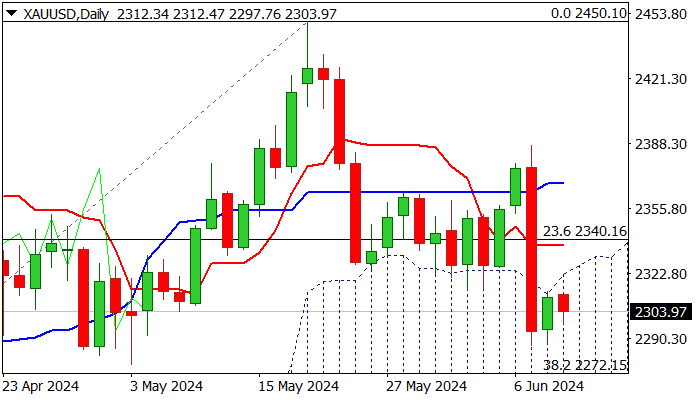Gold prices edged lower in early trading on Tuesday, following Monday’s limited consolidation after nearly a 4% drop on Friday.
The near-term outlook remains bearish following Friday’s massive losses, which were triggered by strong US jobs data and reports that China’s central bank paused gold purchases in May.
Markets are now focusing on this week’s key events: the release of US inflation data and the Fed’s rate decision, both due on Wednesday. Expectations are that consumer prices will barely ease, but any significant deviation from the forecasted levels could cause increased volatility.
The US central bank has limited room to maneuver, particularly after higher-than-expected May payrolls virtually eliminated the likelihood of a rate cut in September. Growing signals suggest the Fed may stay on hold until November.
This scenario is negative for gold, likely increasing pressure on the metal’s price in the near term and allowing for a deeper correction of the $1984/$2450 bull-leg.
The technical picture on the daily chart is weakening, with initial bearish signals generated by penetration and repeated closes within the thick daily cloud, negative momentum, and moving averages (10/20/55) in a bearish setup forming bear-crosses.
However, an oversold stochastic on the daily chart may produce headwinds for bears as it approaches pivotal Fibonacci support at $2272 (38.2% retracement of $1984/$2450).
Near-term action is likely to remain in extended consolidation and a quiet mode until Wednesday’s releases, ideally capped by the daily cloud top ($2322) and not exceeding the daily Tenkan-sen ($2337) to maintain a bearish near-term bias.
A firm break of the $2277/72 pivot would further weaken the near-term structure and expose targets at $2228/17 (daily cloud base / 50% retracement).
Conversely, a violation of the Tenkan-sen line ($2337) would ease bearish pressure, but a sustained break above the daily Kijun-sen ($2368) is required to neutralize the bearish outlook.
Res: 2322; 2337; 2359; 2368
Sup: 2286; 2272; 2228; 2217


